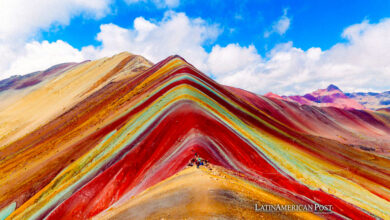Peru has Lost 56.22% of its Glaciers in the Last Six Decades
Peru, home to 68% of the world's tropical glaciers, has lost 56.22% of these ecosystems in the last six decades due to climate change, according to the Ministry of the Environment (Minam). The loss has significant impacts on water supply for high-altitude areas and biodiversity.

Photo: Wikimedia
EFE
Escucha este artículo
Leer en español: Perú ha perdido el 56,22 % de sus glaciares en las últimas seis décadas
These findings were presented in the second National Inventory of Glaciers and Lakes of Glacial Origin (Inglog 2023), highlighting the urgent need to address the accelerated retreat of glaciers caused by climate change.
Alarming Loss of Tropical Glaciers
Peru, the country that contains 68% of the world's tropical glaciers, has lost 56.22% of these ecosystems in the last six decades as a consequence of climate change, the Ministry of the Environment (Minam) reported this Wednesday.
The situation was revealed during the presentation of the second National Inventory of Glaciers and Glacier Lagoons (Inglog 2023) carried out in the northern city of Huaraz, with the participation of the Minister of the Environment, Albina Ruiz.
Minam highlighted that this loss seriously impacts the provision of water that feeds and sustains different high Andean territories such as bofedales (wetlands), grasslands, and native forests, in addition to biological diversity.
Revealing Numbers on Glaciers and Lagoons
The results of the inventory, developed by the National Research Institute of Glaciers and Mountain Ecosystems (Inaigem), revealed a total of 2,084 free glaciers covered by rock debris (detritus), which occupy an area of 1,050.32 square kilometers.
8,466 lagoons of glacial origin were also registered, representing a total area of 1,081.31 square kilometers.
Among the findings, the identification and characterization of 2,147 rock glaciers whose extension covers 107.49 square kilometers and which do not "obviously present the surface glacier mass, which is why they have been barely recognized and studied" in the country, stood out.
"This research generates evidence about the accelerated retreat of glaciers, which are important water reserves in all the country's mountain ranges," Minam said.
The first National Inventory of Glaciers in Peru was prepared by the Glaciology and Hydrology Unit, which reported an extension of 2,041.85 square kilometers of glaciers nationwide, with data from 1960.
Incorporation into Water Resources Management
During the presentation of the latest research, Minister Ruiz said that it is "a valuable tool" for the authorities, the scientific community, and Peruvian society in general to better understand the situation of its glaciers.
"That this be incorporated into the management of water resources and for the prevention of risks associated with glaciers," he noted.
Every 5 years, Inaigem updates the National Inventory of Glaciers and Lagoons of Glacial Origin, with the aim of providing information on the quantity, surface, location, and main physical and morphological characteristics of glaciers and lagoons throughout the country.
Dangerous Glacial Lagoons and Associated Risks
The research includes the 20 glacial mountain ranges that are distributed in 14 departments of Peru and has been prepared based on images taken by satellites in 2020.
Minam pointed out that tropical glaciers, more than other types of glaciers, "show in a more dramatic and obvious way the impacts generated by climate change."
In addition to remembering that many of them are spiritual references to Andean indigenous communities, who consider them their "apus" (tutelary deity), he stressed that glacial retreat reduces the quantity and quality of water available for the population downstream.
Read also: Colombia's Environmental Shift: A 38-Year Retrospective
It also favors the formation of new glacial lagoons, some of them dangerous, because they can generate floods like those that affected the city of Huaraz in 1941; to Lagoon 513, Carhuaz, in 2010; and to the Artison lagoon, in Huaylas, in 2012, all located in the northern region of Áncash.


